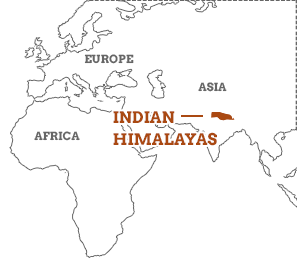Sometimes a geography lesson is the only way, especially with something as humungous as the Himalayas. The name Himalaya comes from the Sanksrit, Hima-laya meaning ‘Abode of snow’, and has, over time, developed into the plural, Himalayas, because of the many number of mountain ranges. There are the Outer Himalayas, also called the Siwalik Range, the Lesser or Lower Himalayas, the Tethys or Tibetan Himalayas, the Trans-Himalayas and the Great Himalayas, home to Mount Everest.
![]()
On my first trip to india I was excited to see the golden triangle. But that is like only having one piece of the Toblerone. The Indian Himalayas were like being presented with the whole bar. And the giant one at that.
![]()
The Indian Himalayan Region dips and dives in and out of the Lesser, Greater, Tethys and Siwalik Ranges with the states of Jammu & Kashmir, Himachal Pradesh, Uttarakhand, Sikkim, Arunachal Pradesh, Assam and West Bengal claiming pieces of pie. This Indian Himalayas travel guide aims to give you a taste of the pie, and show you that there are so many ways to enjoy the highest mountain ranges in the world, following in the footsteps not of great climbers, but of real Indian people who call this awesome abode home.



















